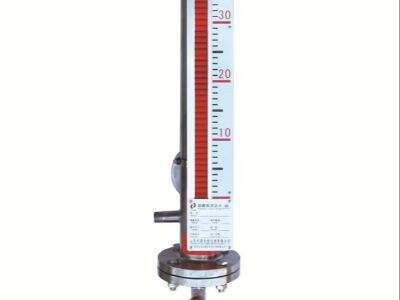Vysílače průtoku jsou výkonná zařízení, která dokážou měřit množství kapaliny nebo plynu pohybujícího se do a z továren. Velmi důležité pro mnoho pracovních míst. KAMBODA poskytuje dobré vysílače průtoku a je to jedna ze slavných značek, na které je každý závislý. Jak však víme, že tyto nástroje fungují správně? Toto je snadno sledovatelný průvodce, abyste mohli zkontrolovat vysílače průtoku a jak přesné jsou od KAMBODA.
Krok 1: Kalibrace
Jedna z prvních kontrol při ověřování snímače průtoku se nazývá kalibrace. Kalibrace znamená, že snímač průtoku poskytuje správné množství měření. Jinými slovy, když si koupíte průtok KAMBODA Převodník/snímače tlaku nejenže vám prodáváme produkty, nabízíme je s certifikátem. Certifikát je kus papíru, který říká, jak dobře může zařízení něco měřit. Přesto stojí za to opakovat, abyste si tuto přesnost sami ověřili po určité době používání zařízení. Po dlouhodobém používání bude nutné původní produkt také překalibrovat nebo pokud byl skladován ve velmi horkém nebo extrémně chladném prostředí. To znamená, že byste nikdy neměli získat špatné výsledky kvůli těmto druhům změn měření.
Krok 2: Zkontrolujte Drift
Za druhé je to sledování jevu známého jako drift. Drift: Termín používaný k označení, že snímač průtoku začne v průběhu času číst nesprávné měření. Může to být způsobeno různými faktory prostředí, jako je kolísání teploty, kolísání tlaku nebo dokonce vibrace. drift můžete zkontrolovat porovnáním naměřených hodnot na vašem vysílači průtoku s jiným nástrojem, o kterém víte, že je přesný. Toto je také známé jako referenční standard. Odchylky u toku KAMBODA téměř neexistují vysílač takže víte, že bude přijatelné používat je po dlouhou dobu.
Krok 3: Potvrďte linearitu
Krok 3: Ověřte, že linearita vašeho snímače průtoku Linearita odpovídá vysílač průtoku schopnost přesně měřit rozsah průtoků. Mělo by působit lineárně a odrážet průtok nebo hladinu kapaliny nebo skutečně procházejícího plynu s tím, co zařízení poskytuje. To může vést k velkým chybám měření jednoduše proto, že odečty nejsou lineární. Linearita bude ověřena porovnáním naměřených hodnot z vašeho snímače průtoku se známým zdrojem průtoku. Takto můžete zjistit, zda vše funguje dobře
Jak měřit průtok vody pomocí vysílačů KAMBODA
V každém průmyslovém odvětví je bezpečnost a kvalita zásadní, pokud je průtok velmi nízký. Několik praktických rad, jak se vyhnout jakýmkoli problémům, když chcete testovat posouzení přesnosti snímačů průtoku pomocí KAMBODA:
Správný výběr průtokoměru: Na rozdíl od čerpadla je v každé konkrétní aplikaci jeden optimální průtokoměr. Obvykle budou nabízet více modelů, které jsou navrženy pro různé průtoky, tlaky a viskozity kapalin.
Nainstalujte správně: Ujistěte se, že při instalaci snímače průtoku dodržujete pokyny výrobce. To je důvod, proč musíte zkontrolovat, zda nedochází k úniku nebo ucpání potrubí na vstupním a výstupním bodě zařízení. Správná instalace pomáhá zařízení pracovat přesněji.
Jak vybrat průtokový vysílač KAMBODA?
KAMBODA nabízí nepřeberné množství možností převodníků průtoku a všechny s vlastními specifickými funkcemi pro různé aplikace. Níže probereme tyto faktory v nezbytných detailech, které je třeba vzít v úvahu při výběru nejvhodnějšího snímače průtoku KAMBODA pro vaše použití.
Typ aplikace: Jakou kapalinu potřebujete změřit? Zvažte jeho výhody Je to tloušťka, hustota, Může způsobit nějaké škody?
Rozsah průtoku KAMBODA: Vysílače poskytované společností KAMBODA, ať už jde o nízký nebo vysoký průtok, mohou měřit přesně. Tímto způsobem, jakkoli to změříte, porovnáváte jablka s jablky na druhé straně.
KAMBODA Zpětný ventil, torpédoborce a vysílače průtoku se všechny mohou pochlubit vysokou přesností. Samozřejmě ne všechny modely jsou stejně dobře ověřené. musíte přemýšlet o tom, jaká úroveň přesnosti má pro váš případ použití smysl.
Kde bude snímač průtoku použit: První podmínkou, kterou je třeba vzít v úvahu, jsou okolní podmínky, kam snímač průtoku umístíte. KAMBODA je příkladem produktu s modely, které jsou zvláště dobré v těžkých nebo nebezpečných bažinatých místech.
Zachování konzistentní přesnosti
Je velmi důležité, aby vaše vysílače průtoku vždy fungovaly perfektně. Úpravy průtoků jistě ovlivní, jak efektivně běží cokoliv ve vašem postupu. Níže si přečtěte, jak můžete zajistit, aby vaše vysílače průtoku KAMBODA fungovaly s konzistentní přesností.
Plánovaná rekalibrace: Snímač průtoku musí být rekalibrován alespoň jednou ročně. Při provádění tohoto úkolu se vždy řiďte pokyny výrobce.
Nepřetržité monitorování: musíte dávat pozor na svůj vysílač průtoku, neměl by sejít z dráhy, tj. je to přenosné zařízení, které může zaznamenat drift nebo se může lišit od toho, co očekáváte, takže vždy pravidelně monitorujte. Inspekce pomohou při odhalování problémů dříve, než se zhorší.
Vyčistěte vysílač průtoku: Ujistěte se, že je vysílač průtoku řádně udržován. Ujistěte se, že jej pravidelně čistěte a nevystavujte jej ničemu, co by mohlo vážně poškodit výrobek.
Vzdělávejte své zaměstnance: Nezapomeňte poučit svůj tým o správném zacházení s vysílači průtoku KAMBODA. Způsob, jak se řídit pokyny výrobce, si nyní musí každý dobře uvědomit, aby mohla být zaručena funkce zařízení.


